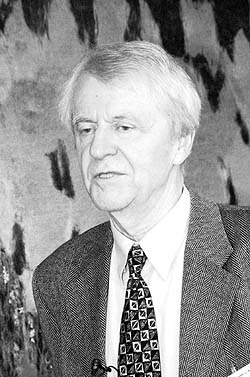Characterization of a mixed high-energy spallation neutron-proton field using monoisotopic activation detectors
Author
| Závorka Lukáš, Ing. Ph.D. | Faculty of Nuclear Sciences and Physical Engineering CTU |
| Vrzalová Jitka, Ing. Ph.D. | Nuclear Physics Institute of the ASCR, JINR Dubna |
| Zeman Miroslav, Ing. | Faculty of Electrical Engineering and Communication Brno University of Technology, JINR Dubna |
| Adam Jindřich, promovaný fyzik CSc. | Faculty of Electrical Engineering and Communication Brno University of Technology |
| Čaloun P. | Nuclear Physics Institute of the ASCR |
| Chudoba Petr, RNDr. Ing. | Institute of Physics ASCR |
| Katovský Karel, Ing. Ph.D. | Faculty of Electrical Engineering and Communication Brno University of Technology |
| Suchopár Martin, Ing. Ph.D. | Institute of Physics ASCR |
| Tichý Pavel, Ing. | Faculty of Nuclear Sciences and Physical Engineering CTU, JINR Dubna |
| Vespalec Radek, Ing. | Faculty of Nuclear Sciences and Physical Engineering CTU, JINR Dubna |
| Wagner Vladimír, RNDr. CSc. | Nuclear Physics Institute of the ASCR |
| et al. | different institutions |
Year
2018
Scientific journal
Nuclear Instruments & Methods in Physics Research Section A, 903, 246-261
Web
Abstract
We used monoisotopic Co, Au, and Bi threshold activation detectors to characterize the high-energy (> 5 MeV) portion of a mixed spallation neutron-proton (n/p) field. The field was produced by irradiating the natural uranium target-blanket subcritical assembly Quinta with 660-MeV protons from Phasotron accelerator at the Joint Institute for Nuclear Research (JINR) in Dubna. Experimental yields of the (n,x) and (p,x) reactions were compared to the calculated reaction rates, which represent the convolution of particle flux and reaction cross section. The flux was simulated using the radiation transport code MCNPX 2.7.0, and the cross sections were extracted from the following three sources: the intranuclear cascade model INCL4.2, the phenomenological spherical optical model from TALYS-1.8, and the evaluated nuclear data file TENDL-2015. We show that, in most cases, the evaluated data provide a closer agreement with the experimental data in comparison with INCL4.2 model, which is an integral part of MCNPX. Our results bring a contribution to those fields of physics research that utilize computer prediction of neutron generation in the energy range of tens to hundreds MeV, such as the medical radioisotope production, radiation shielding of spallation neutron sources, and nuclear transmutation in accelerator-driven systems.
Cite article as:
L. Závorka, J. Vrzalová, M. Zeman, J. Adam, P. Čaloun, P. Chudoba, K. Katovský, M. Suchopár, P. Tichý, R. Vespalec, V. Wagner, . et al., "Characterization of a mixed high-energy spallation neutron-proton field using monoisotopic activation detectors", Nuclear Instruments & Methods in Physics Research Section A, 903, 246-261 (2018)


 MINISTR ŠKOLSTVÍ KE SPOLUPRÁCI ČR S SÚJV
MINISTR ŠKOLSTVÍ KE SPOLUPRÁCI ČR S SÚJV INTEREST JINR, Wave 6
INTEREST JINR, Wave 6 The passing of Ivo Zvára
The passing of Ivo Zvára Call for the projects solved in collaboration with JINR (Projects 3+3)
Call for the projects solved in collaboration with JINR (Projects 3+3)  Call for the Grants of the Plenipotentiary of the Government of the Czech Republic in JINR
Call for the Grants of the Plenipotentiary of the Government of the Czech Republic in JINR Czech Ambassador in Russia visited JINR
Czech Ambassador in Russia visited JINR INTEREST JINR, Wave 5
INTEREST JINR, Wave 5 Russia Visa Centre
Russia Visa Centre Working Stays CR - JINR 2022
Working Stays CR - JINR 2022